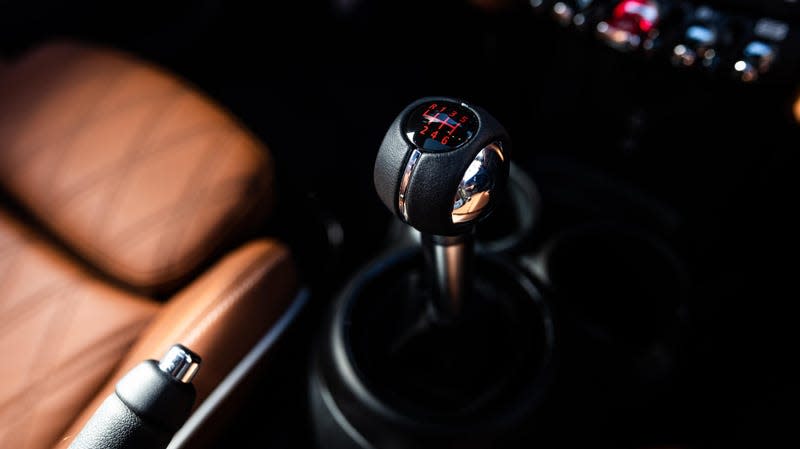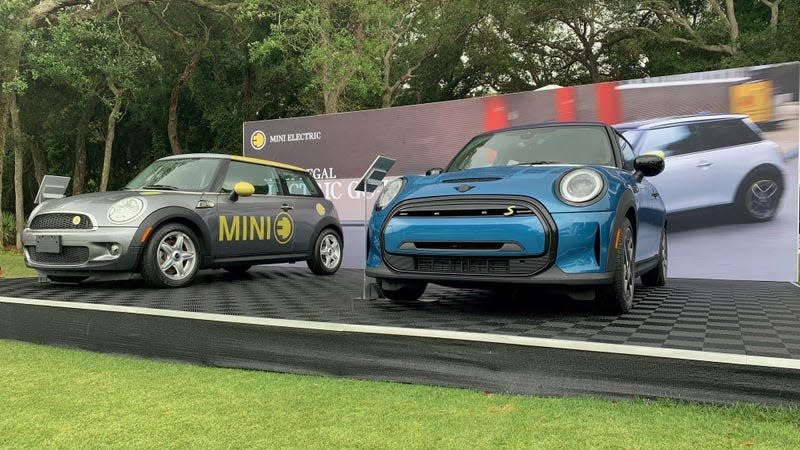Mini Survey Claims Most Young Adults Want to Learn to Drive a Manual

In recent years, automakers have introduced increasingly advanced driver assist systems. The act of driving is becoming more detached as manufacturers race to be the first to bring a fully-autonomous car to showrooms. The apparent demand for self-driving vehicles is not completely surprising in a country where automatic transmissions dominate the market. However, a recent survey conducted by Mini USA claims that drivers still yearn for the more involved experience of driving a manual transmission.
Mini USA’s manual driving survey found that 53 percent of respondents wanted to learn how to drive a manual transmission. That number increased to 67 percent for respondents between the ages of 18 and 34. The survey had a sample size of 1,012 adults and was conducted between January 18 and 20, 2023. In general, the report shows that there is an interest in manual transmission vehicles among younger buyers.
Read more
I’m a little skeptical of Mini’s results, simply because the sample audience over-represents the presence of manual vehicles on American roads. Incredibly, 24 percent of the survey’s respondents claim to own a car with a manual transmission. Compare that with car-sales data from CarMax: The used-car retailer says that in 2020, only 2.4 percent of the vehicles it sold were equipped with a manual transmission, compared to 26.8 percent in 1995.
Perhaps not surprisingly, the results of Mini’s survey seem to support the carmaker’s recent business decisions. Last November, Mini reintroduced the manual transmission option on the Cooper, Cooper S and John Cooper Works two-door hardtops, vehicles that were briefly only available with an automatic. The automaker also announced future availability of the manual transmission on convertible and four-door hardtop variants of the Cooper and Cooper S. Will this strategy be successful for Mini? The stick-shift is suffering dwindling popularity overall, but Mini pitches its cars toward a more enthusiastic, less mainstream buyer, who may have more of an appetite for three pedals.

Then there’s the ongoing transition to electric vehicles. The vast majority of electric cars have a single-speed transmission. California is set to ban the sale of new internal combustion cars by 2035. Mini itself is dabbling in electric propulsion with the Cooper SE. The manufacturer has stated that, while electrification is inevitable, it will keep manual transmissions in use for a long time. Mini claims that its vehicles have a life of just over a dozen years on the road, a figure that falls in line with the rest of the industry. Going by that metric, there will probably still be manual cars on the road in the 2050s.
Despite my doubts, there was one line in the report that stood out. It reads, “Validating the appeal of driving a manual transmission car, an impressive 63 percent of all respondents agree that learning how to drive a manual transmission is a rite of passage and an important life skill.” While I’m not sure how many potential car buyers will flock to a readily-available manual model, the ability to drive stick-shift is clearly still held in high regard. Cars have a prominent place in American culture, and learning how to drive is a pivotal stepping stone in a young person’s life. Learning to drive a manual transmission is seen by many as the purest form of that rite.
More from Jalopnik
Sign up for Jalopnik's Newsletter. For the latest news, Facebook, Twitter and Instagram.

 Yahoo Autos
Yahoo Autos 